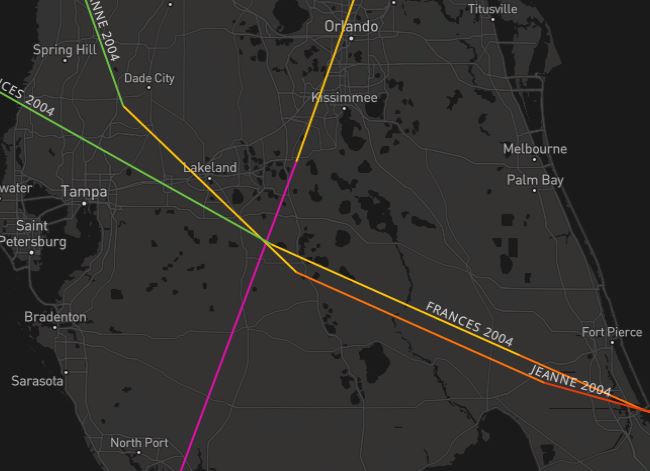NOAA’s Historical Hurricane Tracks Tool
The Takeaway: This popular tool pulls in a wide net of users, from vacation planners and storm-history buffs to technical experts modeling storm risks.

One score and several months ago, the director of NOAA’s National Hurricane Center called up a colleague and asked whether a tool showing historical hurricane tracks could be created. Oh, and could it be done in four months? Cue lots of rallying and putting heads together, and the Historical Hurricane Tracks tool was born. This tool enables users to view, analyze, and share historical hurricane tracking information going back more than 150 years. It is one of the longest-running tools the Office for Coastal Management has ever developed, and its relevance seems to grow as hazards intensify.
The public are big fans of the tool, but its applications go beyond scoping out vacation destinations and wedding spots during hurricane season. It has true technical uses in modeling. Analysts at NOAA’s National Hurricane Center use Historical Hurricane Tracks to determine the highest probable directions and speeds that storms will approach land. Recently, storm surge specialists helped Guam by using the tool to view storms of all categories that had impacted the island. With this information, they were able to target their storm-surge impact modeling to these directions and intensities.
Hurricane-related disasters pile up

Of the 310 billion-dollar weather disasters occurring between 1980 and 2021, hurricanes have caused both the most damage—over $1.1 trillion, with an average cost of $20.5 billion per event—and the highest number of deaths, at 6,697.
As a result, interest in historical hurricane data increases. Historical Hurricane Tracks’ efficiency and data access are growing, too. Twenty years ago, it took months to get the previous year’s storm tracks into the tool. Now, it takes one and a half days. To learn more about this Digital Coast product, check out a tiny tutorial. (2022)
Partners: NOAA Digital Coast and National Hurricane Center
PRINT